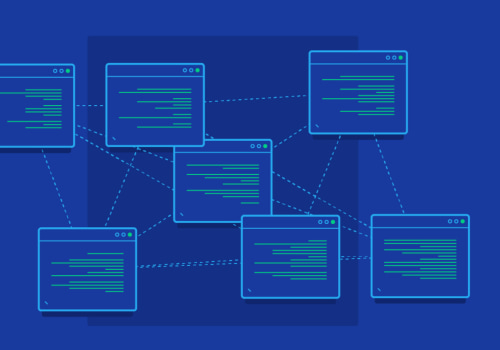Linked Lists, stacks, and queues data structure are three of the most fundamental data structures used in computer science, and are powerful tools for efficiently storing and organizing data. By understanding all three of these data structures, including the queues data structure, you can gain a better understanding of the underlying principles of data structures and algorithms. In this article, we will explore the structures and uses of both Linked Lists and the are three of the most fundamental data structures used in computer science, and are powerful tools for efficiently storing and organizing data. By understanding all three of these data structures, including the queues data structure, you can gain a better understanding of the underlying principles of data structures and algorithms. In this article, we will explore the structures and uses of both Linked Lists and the stacks data structure in detail, providing a comprehensive overview of their components, structure, and implementation. For those who need extra help, there are also many Profs online computer science tutors available to assist with understanding both Linked Lists and the in detail, providing a comprehensive overview of their components, structure, and implementation. For those who need extra help, there are also many Profs online computer science tutors available to assist with understanding both Linked Lists and the stacks data structure.We will then move on to discuss how Linked Lists can be used to solve real-world problems. Finally, we will discuss the advantages and disadvantages of Linked Lists, as well as some tips for getting the most out of them. By the end of this article, you will have a thorough understanding of Linked Lists and how they can be used to help you solve complex problems. Linked Lists, stacks, and queues data structure are three of the most fundamental data structures used in computer science, and are powerful tools for efficiently storing and organizing data. By understanding all three of these data structures, including the queues data structure, you can gain a better understanding of the underlying principles of data structures and algorithms. In this article, we will explore the structures and uses of both Linked Lists and the stacks data structure in detail, providing a comprehensive overview of their components, structure, and implementation. For those who need extra help, there are also many Profs online computer science tutors available to assist with understanding both Linked Lists and the stacks data structure. We will then move on to discuss how Linked Lists can be used to solve real-world problems. Finally, we will discuss the advantages and disadvantages of Linked Lists, as well as some tips for getting the most out of them. By the end of this article, you will have a thorough understanding of Linked Lists and how they can be used to help you solve complex problems. are three of the most fundamental data structures used in computer science, and are powerful tools for efficiently storing and organizing data. By understanding all three of these data structures, including the queues data structure, you can gain a better understanding of the underlying principles of data structures and algorithms. In this article, we will explore the structures and uses of both Linked Lists and the stacks data structure in detail, providing a comprehensive overview of their components, structure, and implementation. For those who need extra help, there are also many Profs online computer science tutors available to assist with understanding both Linked Lists and the stacks data structure. We will then move on to discuss how Linked Lists can be used to solve real-world problems. Finally, we will discuss the advantages and disadvantages of Linked Lists, as well as some tips for getting the most out of them. By the end of this article, you will have a thorough understanding of Linked Lists and how they can be used to help you solve complex problems. Linked Lists, stacks, and queues data structure are three of the most fundamental data structures used in computer science, and are powerful tools for efficiently storing and organizing data. By understanding all three of these data structures, including the queues data structure, you can gain a better understanding of the underlying principles of data structures and algorithms. In this article, we will explore the structures and uses of both Linked Lists and the stacks data structure in detail, providing a comprehensive overview of their components, structure, and implementation. For those who need extra help, there are also many Profs online computer science tutors available to assist with understanding both Linked Lists and the stacks data structure. We will then move on to discuss how Linked Lists can be used to solve real-world problems. Finally, we will discuss the advantages and disadvantages of Linked Lists, as well as some tips for getting the most out of them. By the end of this article, you will have a thorough understanding of Linked Lists and how they can be used to help you solve complex problems. in detail, providing a comprehensive overview of their components, structure, and implementation. For those who need extra help, there are also many Profs online computer science tutors available to assist with understanding both Linked Lists and the stacks data structure. We will then move on to discuss how Linked Lists can be used to solve real-world problems. Finally, we will discuss the advantages and disadvantages of Linked Lists, as well as some tips for getting the most out of them. By the end of this article, you will have a thorough understanding of Linked Lists and how they can be used to help you solve complex problems. Linked Lists, stacks, and queues data structure are three of the most fundamental data structures used in computer science, and are powerful tools for efficiently storing and organizing data. By understanding all three of these data structures, including the queues data structure, you can gain a better understanding of the underlying principles of data structures and algorithms. In this article, we will explore the structures and uses of both Linked Lists and the stacks data structure in detail, providing a comprehensive overview of their components, structure, and implementation. For those who need extra help, there are also many Profs online computer science tutors available to assist with understanding both Linked Lists and the stacks data structure. We will then move on to discuss how Linked Lists can be used to solve real-world problems. Finally, we will discuss the advantages and disadvantages of Linked Lists, as well as some tips for getting the most out of them. By the end of this article, you will have a thorough understanding of Linked Lists and how they can be used to help you solve complex problems. are three of the most fundamental data structures used in computer science, and are powerful tools for efficiently storing and organizing data. By understanding all three of these data structures, including the queues data structure, you can gain a better understanding of the underlying principles of data structures and algorithms. In this article, we will explore the structures and uses of both Linked Lists and the stacks data structure in detail, providing a comprehensive overview of their components, structure, and implementation. For those who need extra help, there are also many Profs online computer science tutors available to assist with understanding both Linked Lists and the stacks data structure. We will then move on to discuss how Linked Lists can be used to solve real-world problems. Finally, we will discuss the advantages and disadvantages of Linked Lists, as well as some tips for getting the most out of them. By the end of this article, you will have a thorough understanding of Linked Lists and how they can be used to help you solve complex problems. Linked Lists, stacks, and queues data structure are three of the most fundamental data structures used in computer science, and are powerful tools for efficiently storing and organizing data. By understanding all three of these data structures, including the queues data structure, you can gain a better understanding of the underlying principles of data structures and algorithms. In this article, we will explore the structures and uses of both Linked Lists and the stacks data structure in detail, providing a comprehensive overview of their components, structure, and implementation. For those who need extra help, there are also many Profs online computer science tutors available to assist with understanding both Linked Lists and the stacks data structure. We will then move on to discuss how Linked Lists can be used to solve real-world problems. Finally, we will discuss the advantages and disadvantages of Linked Lists, as well as some tips for getting the most out of them. By the end of this article, you will have a thorough understanding of Linked Lists and how they can be used to help you solve complex problems.
So let's get started!
Examples of Linked Lists in Practice
Linked lists are incredibly useful in a wide variety of applications. In fact, they are often used to implement other data structures. Here are some examples of how linked lists can be used in real-world situations:1.Stacks and Queues:Stacks and queues are two fundamental data structures that are commonly used in programming. Both of these structures are implemented using linked lists.When creating a stack or a queue, a linked list is used to store the data elements in the desired order.
2.Allocating Memory:
Linked lists can be used to manage memory by allocating and deallocating memory as needed. This type of memory management is often used in operating systems to efficiently allocate memory to different processes.3.Hash Tables:
Hash tables are a type of data structure that is used to store and retrieve data quickly. They are often implemented using linked lists as the underlying data structure.4.Graphs:
Graphs are another fundamental data structure that can be implemented using linked lists. Each node in the graph is represented by a linked list node, which stores the data associated with the node and links to adjacent nodes.Performance Considerations with Linked Lists
Linked lists are a powerful data structure, but they may not always be the best choice for certain coding tasks.Linked lists can be inefficient in terms of memory usage and access time, and their performance can vary depending on the size of the list and the type of operations being performed. To improve the performance of linked lists, developers should consider using alternative data structures such as arrays or hash tables. These data structures have better performance characteristics than linked lists and can provide faster access to data. In addition, developers should also use techniques such as caching, pre-allocating memory, and pre-sorting data to improve the performance of linked lists.
Caching can reduce the number of disk accesses required for a given operation, while pre-allocating memory can reduce the need for dynamic memory allocation. Pre-sorting data can also improve the performance of linked list operations such as searching and inserting data. Finally, developers should consider using optimized algorithms to improve the performance of linked list operations. Algorithms such as the skip list, A* search, and binary search tree can provide improved performance over standard linked list operations.
Characteristics and Uses of Linked Lists
Linked lists are a type of linear data structure that are composed of nodes. Each node contains data and a pointer to the next node in the list.This type of data structure offers several advantages over other types of data structures like arrays, including dynamic memory allocation and efficient insertion and deletion operations. When it comes to characteristics, linked lists are characterized by the fact that each node is connected to the next node in the list by a pointer. This pointer is used to traverse the list from one node to the next, allowing for efficient access and manipulation of data within the list. Linked lists can be used for various coding projects, such as linked list queues, stacks, and graphs.
Linked list queues allow for efficient insertion and deletion of data, while linked list stacks allow for fast access of data. Graphs can also be represented using linked lists, allowing for efficient storage and access of large amounts of data. Overall, linked lists offer an efficient way to store and manipulate data. They are ideal for projects that require dynamic memory allocation and fast insertion and deletion operations.
Advantages and Disadvantages of Linked Lists
Linked lists provide a number of advantages over other data structures, including their flexibility and memory usage. They can be used to store and access data quickly and efficiently, and they are often used in coding projects due to their fast search times. One of the main advantages of linked lists is that they are dynamic, meaning that they can easily be changed or modified as needed. This makes them ideal for projects where data needs to be constantly updated or manipulated.Additionally, linked lists are efficient in terms of memory usage, as they only require a minimal amount of storage space. On the other hand, there are some drawbacks to using linked lists. One of the main disadvantages is that they can be difficult to debug and maintain, as they require specialized knowledge and skills. Additionally, if the data stored in a linked list is constantly changing, it can become slow or inefficient over time.
Finally, linked lists are not always suitable for larger data sets, as it can take a long time to search through large linked lists. Overall, linked lists provide a great deal of flexibility and efficiency when it comes to storing and accessing data quickly and efficiently. However, it is important to consider the pros and cons of linked lists before deciding if they are the best choice for a given coding project.
Implementing Linked Lists
Linked lists are one of the most fundamental data structures used in computer science. Implementing linked lists requires understanding of data nodes, memory allocation, and pointers.To effectively use linked lists in your coding projects, it is important to understand how to construct and maintain them.
Data Nodes
Linked lists are made up of a series of data nodes. Each node contains a piece of data and a reference, or pointer, to the next node in the list. The last node in the list points to null (or nothing).Data nodes are usually represented by a struct, or class in object-oriented programming languages.
Memory Allocation
Since each node needs to store a piece of data and a pointer, they need to be allocated memory dynamically. This means that when a new node is created, the program must allocate some memory for it. Many programming languages have functions specifically for this purpose.PointersPointers are variables that store memory addresses. They are used to link the nodes in a linked list together. When a new node is created, the pointer of the previous node is set to point to the address of the new node. This is how the linked list maintains its structure.
By understanding data nodes, memory allocation, and pointers, you can effectively implement linked lists into your coding projects. With practice and experience, you can become proficient in creating and maintaining linked lists.
What is a Linked List?
A linked list is a type of data structure used in computer science. It is a linear collection of data elements, known as nodes, that are connected together using links. Unlike other data structures such as arrays, linked lists do not require the data elements to be stored in contiguous memory locations.Instead, each node is connected to the next node in the list, allowing for more efficient access and manipulation of the data. Linked lists are advantageous over other data structures because they allow for dynamic memory allocation and can easily store large amounts of data. They are also better at adding and removing data elements from the list than other types of linear data structures. Additionally, linked lists can be used to implement other more complicated abstract data structures, such as stacks and queues.
In comparison to other data structures, linked lists have a few drawbacks. They generally take up more memory than other linear data structures and are more difficult to search through. Additionally, linked lists are less efficient than trees or hash tables when it comes to locating an element within the structure. In conclusion, linked lists are an essential data structure for many coding projects. By understanding their definition, characteristics, uses, advantages, disadvantages, and performance considerations, developers can make an informed decision about when and how to use them.
This article has provided a comprehensive overview of everything you need to know about linked lists, allowing developers to confidently incorporate them into their coding projects.











